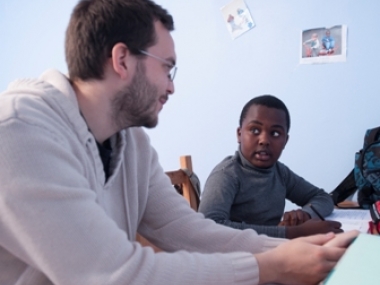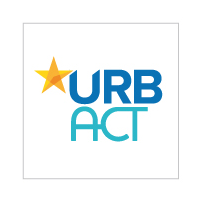Prevent - Nantes coup de pouce
Edited on
01 July 2015A “Club Coup de pouce” is a small group of five six years old pupils who are learning to read at school. As almost everywhere in the world, children are learning to read at school, with different methods. The concept of “Club Coup de pouce” was created in 1993 by an association and developed in France. The idea is to avoid early school failure by promoting the pleasure of reading among children who are just learning to read. It is dedicated to children where family environment does not allow practicing at home after school.

There are now 243 cities that organise some Clubs coup de pouce in France (total of 9 300 children) and 13 in Nantes (65 children).
The city of Nantes is engaged in an educational success politic with a department dedicated. The first clubs were created in 2004-2005. The city organizes, with schools, the course of each club. One person in the department is especially dedicated to the organization of the clubs.
The challenge
- By helping children after school to give them the key of good reading for the rest of their schooling
- By helping parents in order to increase the possibility for families to be more active even if they have difficulties to read,
- By getting together in a sort of co-education,
- By increasing the value of cooperation as a starting point to build the local educational action,
Who initiated the project?
Some teachers have created the association APFEE (Association to promote equity of chance at school) in 1993. The “club coup de pouce” is one of their actions.
The city of Nantes has decided to join this program in 2004.
Who are the target groups?
Childrens’ group:
6 years old Children who are learning to read ant to write at school but need some help after school.
Parents’ group:
The idea is to show the parents that they can help their children to read.
How does it work?
Pupils have got the Club Coup de pouce training every Monday, Tuesday, Thursday and Friday after class during one hour and half, from November to June.
There is five children per group, no more.
The activity leader is not a teacher.
The process is each time the same:
- eating a little snack: children talk about what they want about school “like at home” (25 min)
- doing the reading homework given by the teacher (15min)
- games and exercises around sounds, reading writing small texts all together: the idea is to show pupils that they can read, win the game and be in success situation. The adult congratulates them. (30 min)
- the “beautiful story” is the last time : the adult read a story every day to show how it is good to learn to read : children learn the pleasure to read.
Challenges along the way?
Children could be tired to stay at school to practice in a group but because it is based on games and short activities, we don’t loose them.
Parents could not think they should be involved.
How were they tackled?We are thinking about a new organization with only two days in order ton involve parents the other days.
Why do you consider it to be a “good practice”?
Learning to read is regarding not only like the school “job” but the commitment of all: children and parents, school, the city, the association,
It is sometimes difficult to work all together: the organisation of the “club” gives a place and a role to everyone and not disqualifies school.
Evaluation
An evaluation is done at the end of the school year for each club: children, parents, teacher and the club leader are questioned. The association gives a national evaluation.
 Submitted by URBACT on
Submitted by URBACT on




